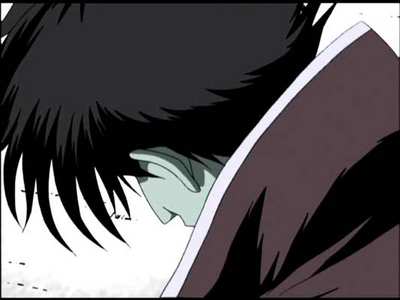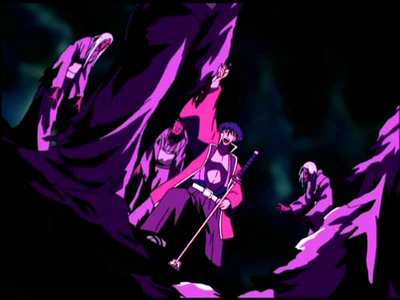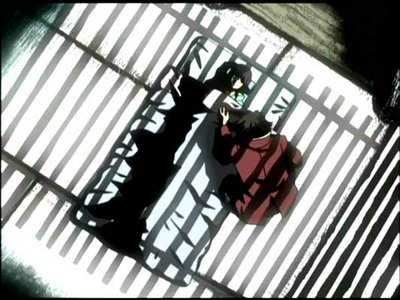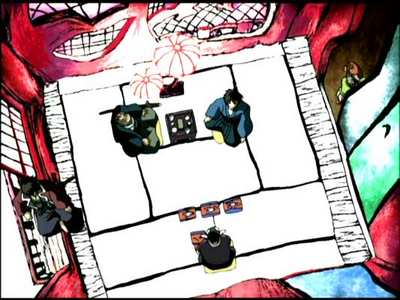Review of Requiem From The Darkness: Vol.2 - Human Atrocity
Introduction
The second volume of this ambitious anime, based on a novel by Natsuniko Kyogoku, is now thrust upon the great British anime buying public. A thirteen-part series split over four volumes, the second, titled `Human Atrocity` brings us into the era of the series` short-change volumes. Even if you skipped your school maths lessons for a smoke round the back of the bike shed or a spot of loitering down the town, if you get out your fingers and do some counting, you`ll know four into thirteen doesn`t go evenly, so volumes two-through-four are going to come up light. Volume two, ladies and gentlemen - same RRP, now with 25% less of the episode goodness volume one contained; or around an hour of anime for twenty quid if you take away both sets of credits and the trails at the end of each episode. Someone really should complain to their MP.
Requiem From The Darkness is the tale of Momosuke, a young novelist who`s searching the land for inspiration for his desperately desired to be written compendium of ghost stories. By the hand of coincidence or the whim of fate, he finds himself constantly caught up in the antics of three supernatural vigilantes, out to right wrongs and deliver karmic retribution on those guilty of crimes consigned to the darkest realms of human behaviour.
Volume two episodes comprise:
Episode 5: Salty Choji
Episode 6: Shibaemon The Racoon Dog
Episode 7: Katabira Crossroads

Video
`Requiem From The Darkness` sports some of the oddest visual stylings found in contemporary anime. Think Tim Burton meets traditional Japanese watercolour painting. In fact, the misshapen, ill proportions of the characters and background objects bring to mind Burton`s `A Nightmare Before Christmas`. Blurring the gulf between atypical anime stylings and a gruff, westernised flair, `RFtD` uses muted palettes, blocks of under-detailed animation and thick, deep blacks - at times looking incredibly un-Eastern. It`s strange, but by volume two, adjustment sets it, and it become charming in all its queerness. Even the habit of detail all but evaporating in distance shots is kind of, well... cute.
`RFtD` is presented in full frame 1.33:1, and the DVD transfer is good and unburdened by common animation-to-DVD albatrosses.

Audio
Japanese Dolby Digital 2.0, or an English dub, also DD 2.0
If you`re not a stalwart listener of the native tracks when it comes to anime, you might find yourself early on flipping between the two, trying to decide which of Momosuke`s voices sounds the least whiney and outright annoying and cartoonish. The Japanese track wins by a narrow margin in that respect. Other than that, both stereo mixes are good.
There are pleasant songs opening and closing each episode. Typically, they have no thematic relevance to the show, so complementing our horror theme we have a disco-tinged opener, and a breezy, whispering jazz track to close.
The yellow English subtitles are clear and neat.

Features
You`d think that, in an attempt to make up for the light episode count, the producers would strap the bulk of the series` extras to the second volume`s back. Not so. The disc houses a sketch gallery that moves at its own slow pace, a composite of backround art that is, mercifully, navigated by the user but pretty bland, as well as trailer reels for `Tenjho Tenge` and `Gungrave`.

Conclusion
Three episodes may be of little relevance on paper, but in practice, these episodes on the second volume of `RFtD` reveal more than you might think; they`re perfectly enjoyable but reek of unfulfilled potential, and as we`re now over half way through the series, they signal that the desire for the show to branch out and reveal a little depth is unlikely to be realised. Revelling in heavyweight themes with lightweight execution, `RFtD` shows an ease within its own shoes, but is actually starting to disappoint.
They say that the great evil lies within the heart of man, and that`s a baton the show picked up the first volume and is happy to persevere with in volume two. Momosuke starts of this set of episodes in now overfamilair territory with `Salty Choji`, which sees him taking shelter in a dwelling where an occupant is some former evildoer-or-other that is going to have his secret past aired by the inquisitive author, and the trio of Mataichi, Ogin and Nagamimi are going to punish him good and proper by the time the closing credits kick in. Can feel... contempt... breeding... The second episode, titled `Shibaemon The Racoon Dog` is stomach deep in traditional Japanese folklore, with the tale of a `Tanuki`, or `Racoon Dog`, which may have taken human form and is busy slaughtering the members of travelling company of puppeteers. This episode is all over the place - more than a little convoluted, pig-headed and determined to stuff far too much into a 23-minute episode of anime. It is, however, far more ambitious than anything seen in `RFtD` up until now and it`s that ambition which saves the volume from mere mediocrity. The third and final episode of the volume is `Katabira Crossroads`, in which vigilante Ogin winds up, much to horror of (in his mind, anyway) would be suitor Momosuke, dead. Naturally, there`s more to it than meets the eye, which means there`s a mystery to unfold. This is probably the weakest of the seven episodes so far, with our protagonist`s manly desire for Ogin rearing its head for the first time proper, and forcing the viewer to try and care.
It`s fast becoming clear that Momosuke`s quest to write his stories is but a cipher for buckets of gore and for the trio of vigilantes to pop in at the end of each tale and right a few wrongs. Which wouldn`t be a problem if `RFtD` wasn`t so darned repetitive and predictable. Still, the show is entertaining enough, requiring a mite more concentration than your average anime. But it`s simply not as interesting as it thinks it is, or more to the fact, should be, severely lacking in the character and personality a good anime requires. Volume two isn`t so much a mammoth step backwards for overall plot growth as the meandering nature of these episodes suggest, but it certainly brings everything to a standstill. The optimism volume one brought, despite all its flaws, is quite rapidly slipping away.
Your Opinions and Comments
Be the first to post a comment!